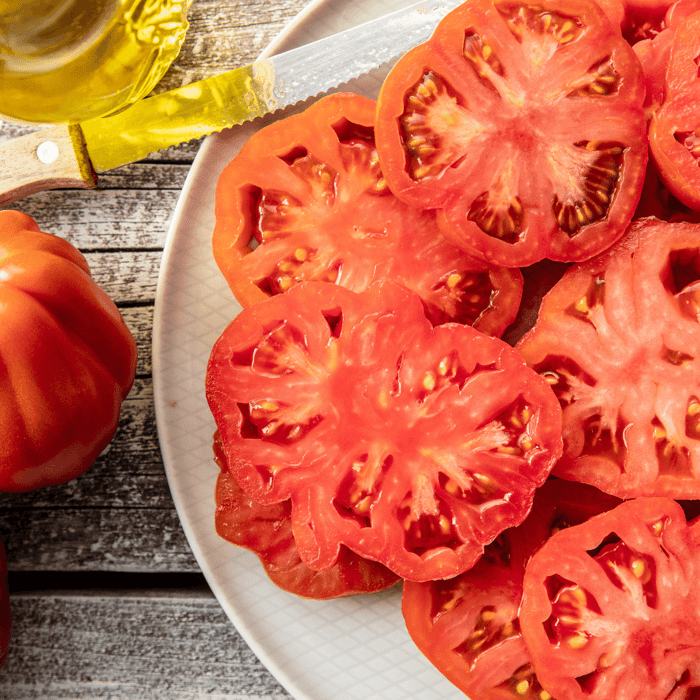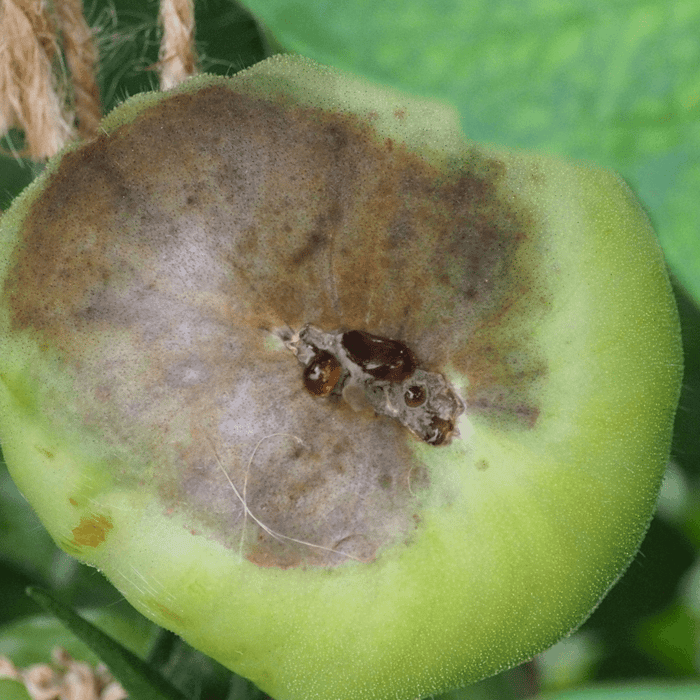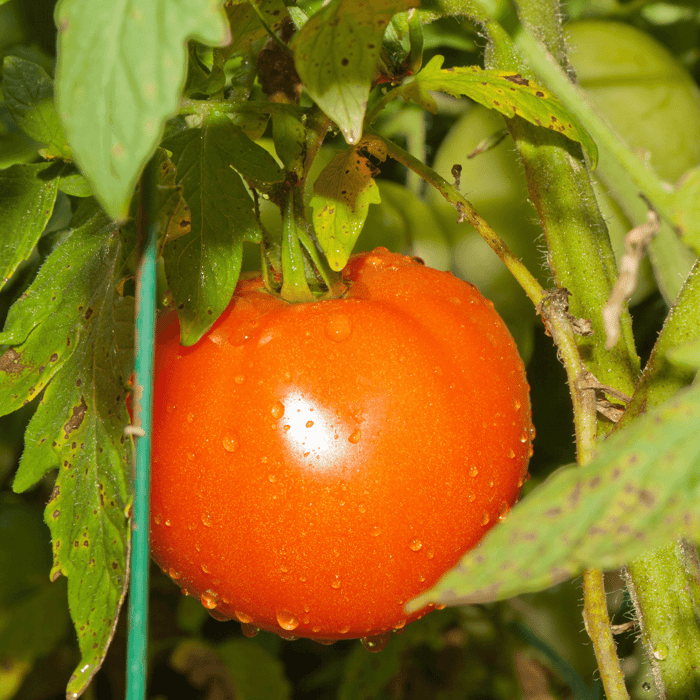Beefsteak tomatoes, also known as slicing tomatoes, are a popular choice for many home gardeners due to their large size, delicious flavor, and versatility in the kitchen. However, growing these hefty tomatoes requires some specialized care and attention. This comprehensive guide will walk you through the steps to grow beefsteak tomatoes in your home garden. We will cover everything from selecting the right variety to dealing with pests and diseases.
Contents for How to Grow Beefsteak Tomatoes
- Beefsteak Tomato Varieties
- Plant Characteristics
- Starting Beefsteak Tomato Seeds
- Transplanting Beefsteak Tomato Plants
- Soil, Fertilization, and Watering
- Good Air Circulation and Pruning
- Pest and Disease Management
- Harvesting Your Beefsteak Tomatoes
1. Beefsteak Tomato Varieties
Before you begin growing beefsteak tomatoes, it's important to select the right variety for your garden. Numerous beefsteak tomato varieties are available, each with its unique characteristics. Some popular options include:
-
Brandywine: Known for its rich, heirloom flavor and large size. This variety is considered one of the best-tasting tomatoes available, and its fruits can reach up to 2 pounds in weight. However, it can be more susceptible to diseases than other varieties, requiring careful monitoring and maintenance.
-
Mortgage Lifter: A high-yielding variety that produces large, meaty fruits. This variety was developed during the Great Depression by a gardener who used the profits from selling these tomatoes to pay off his mortgage. It's known for its pinkish-red fruits weighing up to 2 pounds and its resistance to some common diseases.
-
Big Beef: A disease-resistant variety that produces large, flavorful tomatoes. This hybrid variety is an All-America Selections winner known for its vigorous growth and high yield. Its fruits are deep red, firm, and weigh up to 1 pound.
-
Black Krim: A dark-colored variety with a unique, smoky flavor. This Russian heirloom variety is known for its dark purple-black fruits with green shoulders. The fruits can weigh up to 1 pound and taste slightly salty, making them a favorite among tomato enthusiasts. We have a complete growing guide on how to grow black krim tomatoes from seed as well.
Take the time to research different varieties and choose one that is well-suited to your climate and taste preferences. Remember that some varieties may have different requirements for care and maintenance, so be sure to research the specific needs of your chosen variety.
Tomato Seed Assortment | 8 Variety Pack
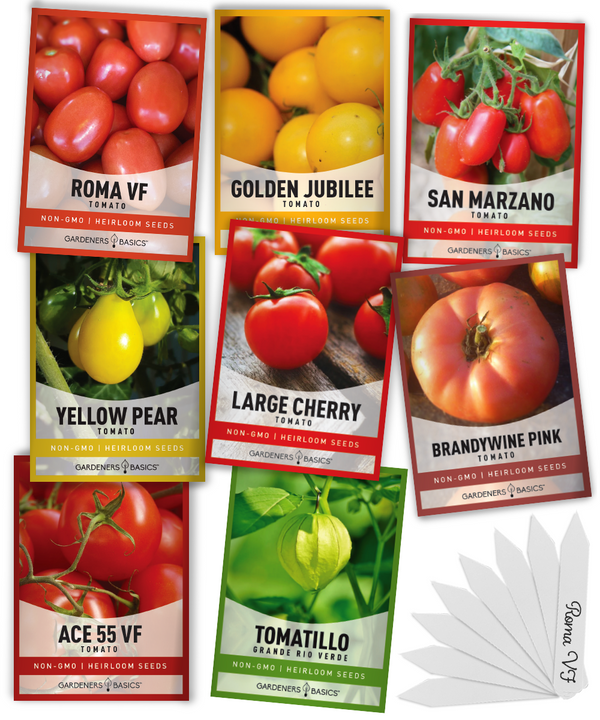
$15.95
8 Tomato Seeds Variety Pack – Heirloom, Non-Hybrid, Open-Pollinated, Non-GMO – Perfect for Home Gardens! Unlock the secrets to a thriving tomato garden with our premium 8 Tomato Seeds Variety Pack! Carefully curated for tomato lovers and gardening enthusiasts alike, this… read more
2. Plant Characteristics
Understanding the characteristics of your chosen beefsteak tomato variety is crucial for successful growth. Here is a bulleted list of key plant characteristics:
- Native: South America
- Family: Solanaceae
- Genus: Solanum
- Common Name: Beefsteak Tomato
- History of the Seed: Originated in South America and has been cultivated for thousands of years. Tomatoes were brought to Europe in the 16th century, becoming a popular addition to gardens and cuisines.
- Days till Maturity: 75-90 days, depending on the variety. The length of the growing season may affect the time it takes for your tomatoes to reach maturity, so be sure to choose a type that is well-suited to your climate.
- Planting Depth: 1/4 inch
- Plant Spacing: 24-36 inches apart. Spacing your plants properly will help ensure adequate sunlight and air circulation, which is important for their overall health and productivity.
- Days to Germination: 7-14 days. The germination process may be quicker in warmer environments, while cooler temperatures may slow it down. Keep this in mind when planning your planting schedule.
- Indoors or Direct Sown: Start seeds indoors and transplant seedlings outdoors. This allows you to control the initial growing conditions and gives your plants a head start before exposure to outdoor elements.
- Full Sun or Partial Shade: Full Sun. Beefsteak tomatoes require at least 6-8 hours of direct sunlight daily to thrive and produce a bountiful harvest.
- When to harvest: When the fruit is fully colored and slightly soft to the touch. The exact color of a ripe beefsteak tomato will vary depending on the variety, so be sure to familiarize yourself with the appearance of your chosen type.
- Plant Height: 4-6 feet tall, depending on the variety. Some beefsteak tomato varieties may grow taller than others, so be prepared to provide adequate support, such as stakes or cages, to prevent the plants from collapsing under their own weight.
- Plant Width: 2-3 feet wide. Proper spacing between plants will ensure that each one has enough room to grow and receive adequate sunlight and air circulation.
3. Starting Beefsteak Tomato Seeds
To start your beefsteak tomato seeds, follow these steps:
-
Choose the right time: Start your seeds indoors 6-8 weeks before the last frost date in your area. This will ensure the plants are well-established and can be safely transplanted outdoors once the weather warms early in the season. Remember that some varieties may have a longer growing season, so adjust your planting schedule accordingly.
-
Prepare seed trays or pots: Fill seed trays or small pots with a high-quality seed-starting mix. Moisten the mix before planting. This helps to ensure that the seeds make good contact with the soil and improves the chances of successful germination.
-
Plant the seeds: Sow the beefsteak tomato seeds 1/4 inch deep and cover with soil. Space the seeds 1-2 inches apart to allow for proper growth. Label each tray or pot with the variety name and the planting date to help you keep track of their progress.
-
Maintain temperature and moisture: Place the seed trays or pots in a warm location with a consistent temperature of 70-80 degrees Fahrenheit. Keep the soil moist but not soggy throughout the germination process. Using a humidity dome or plastic wrap can help maintain moisture levels and create a more favorable environment for germination.
-
Provide light: Once the seedlings have emerged, provide ample light for 14-16 hours daily. Use a grow light or place them near a sunny window to ensure they receive light exposure. Proper light exposure will help your seedlings grow strong and healthy, reducing the risk of legginess.
-
Thin seedlings: As they grow, thin them to one per pot or cell to prevent overcrowding. Overcrowded seedlings will compete for resources and become weak and prone to diseases.
-
Harden off: Before transplanting your beefsteak tomato plants outdoors, gradually expose them to outdoor conditions for 7-10 days. Begin with a few hours of exposure to sunlight each day and gradually increase the duration until the plants are ready to be transplanted. This process, known as hardening off, helps the plants acclimate to their new environment and reduces the risk of transplant shock.
Heirloom Tomato Seeds for Planting | 16 Variety Pack
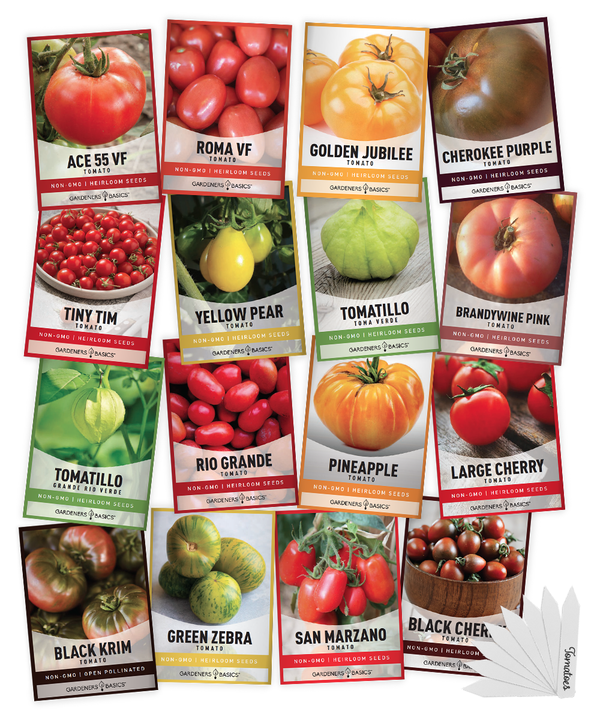
$19.95
The Ultimate Tomato Seed Variety Set - 16 Heirloom, Non-GMO Tomato Varieties for Your Home Garden Introducing our 16 Tomato Seeds Variety Pack, a must-have collection for any gardening enthusiast or professional grower! This premium seed assortment includes a diverse selection… read more
4. Transplanting Beefsteak Tomato Plants
When it's time to transplant your beefsteak tomato plants outdoors, follow these steps:
-
Choose the right time: Wait until nighttime temperatures are consistently above 50 degrees Fahrenheit, and there is no risk of frost. This will ensure that the plants will not be damaged by cold weather. Additionally, soil temperatures should be at least 60 degrees Fahrenheit, as cooler soil can stunt the growth of plants.
-
Prepare the planting area: Choose a sunny location with well-draining soil. Amend the soil with compost or well-rotted manure to improve its fertility and structure. If using black plastic mulch, lay it down before transplanting to help warm lighter soils, suppress weeds, and conserve moisture.
-
Plant the seedlings: Dig a hole for each seedling that is deep enough to accommodate the entire root ball. Tomato plants can be planted deeper than in their pots, as they will develop roots along the buried stem, resulting in a stronger plant. Space the plants 24-36 inches apart for proper growth and good air circulation. If planting in rows, leave 4-5 feet between rows to allow easy access and maintenance.
-
Water and fertilize: Water the transplanted seedlings thoroughly and apply a balanced fertilizer, such as 10-10-10, at 1 pound per 100 square feet. Alternatively, following the package instructions for the correct application rate, you can use organic fertilizer, such as composted manure or fish emulsion. Regular fertilization will help promote healthy growth and a bountiful harvest.
5. Soil, Fertilization, and Watering
Proper soil, fertilization, and watering practices are crucial for the health and productivity of your beefsteak tomato plants. Here's what you need to know:
-
Soil: Beefsteak tomatoes prefer well-draining soil with a pH between 6.0 and 6.8. If your soil is too acidic, add lime to raise the pH; if it's too alkaline, add sulfur to lower the pH. A soil test before planting can provide valuable information about your soil's nutrient levels and pH, allowing you to make any necessary amendments for optimal growth.
-
Fertilization: Apply a balanced fertilizer at planting and again when the plants set fruit. Use a slow-release or organic fertilizer to prevent nutrient burn. As your plants grow, they may require additional applications of fertilizer to support their continued development. Follow the package instructions for the appropriate application rate and frequency.
-
Watering: Water your beefsteak tomato plants consistently, providing 1-2 inches weekly. Water early in the day allows the foliage to dry before nightfall, reducing disease risk. Avoid overhead watering to minimize the spread of diseases. Instead, use a soaker hose or drip irrigation system to apply water directly to the soil around the base of the plants. Maintaining consistent moisture levels prevents blossom end rot and fruit cracking.
6. Good Air Circulation and Pruning
Proper air circulation and pruning practices are essential for a healthy, productive beefsteak tomato plants:
- Air circulation: Space your plants at the recommended distance of 24-36 inches apart to ensure good air circulation. This will help prevent the spread of diseases and pests. Proper air circulation also allows the plants to dry quickly after rainfall or watering, reducing disease risk.
- Pruning: Prune your beefsteak tomato plants to improve air circulation and promote a more robust structure. Remove the lower leaves and branches touching the ground to prevent soil-borne diseases. Additionally, remove any suckers—small shoots that grow from the base of the plant or in the crotch between the main stem and branches. Pruning suckers will direct the plant's energy into fruit production and help prevent the plant from becoming too bushy, which can reduce air circulation.
- Support: Support your beefsteak tomato plants to keep them off the ground and improve air circulation. Use stakes, cages, or trellises to support the growing plants. Secure the plants to the support system with soft ties or clips, careful not to damage the stems.
- Rotation: Rotate your tomato plants each year, avoiding planting them in the same area where you grew tomatoes or other members of the Solanaceae family (such as peppers, eggplants, or potatoes) during the previous growing season. This helps to prevent the buildup of soil-borne diseases and pests.
Rare Tomato Seeds | 5 Variety Pack
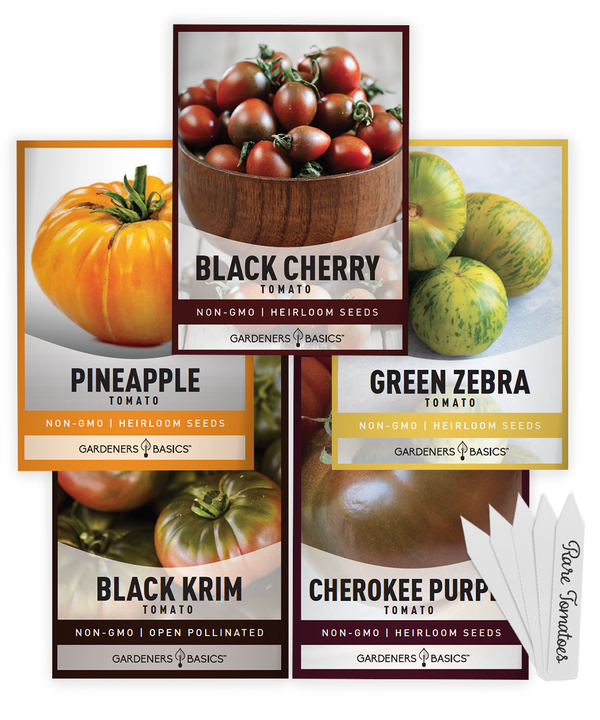
$9.95
Grow Unique Tomatoes: 5 Rare Tomato Seeds Collection for Your Garden Introducing our 5 Rare Tomato Seeds Variety Pack, a must-have for every tomato lover and avid gardener! This premium collection features a curated selection of rare heirloom tomato seeds to… read more
7. Pest and Disease Management
Beefsteak tomatoes can be susceptible to various pests and diseases, so monitoring your plants and taking appropriate action when necessary is essential. Some common pests and diseases that may affect your beefsteak tomato plants include:
-
Aphids: Small, soft-bodied insects that feed on plant sap, causing leaves to curl and become distorted. Control aphids by releasing beneficial insects, such as ladybugs or lacewings, or applying insecticidal soap or neem oil.
-
Flea beetles: Small, jumping beetles that feed on the leaves of tomato plants, causing tiny holes or "shot holes." Control flea beetles by applying insecticides, such as pyrethrum or spinosad, or using floating row covers to protect your plants.
-
Verticillium wilt: A soil-borne fungal disease that causes lower leaves to yellow and wilt, eventually leading to plant death. Prevent verticillium wilt by rotating crops, choosing resistant varieties, and removing infected plants from the garden.
-
Nematodes: Microscopic worms that feed on the roots of tomato plants, causing stunted growth and reduced yield. Prevent nematodes by rotating your crops, planting marigold seeds or other nematode-repelling plants, and using organic soil amendments, such as compost or well-rotted manure.
Monitor your beefsteak tomato plants regularly for signs of pests and diseases, and take appropriate action to maintain their health.
8. Harvesting Your Beefsteak Tomatoes
Knowing when to harvest beefsteak tomatoes is key to enjoying their full flavor and texture. Follow these guidelines for a successful harvest:
-
Color: Harvest your beefsteak tomatoes when they have reached their full color, which varies depending on the variety. The fruit should be mostly uniform in color and have a glossy sheen.
-
Texture: The fruit should feel slightly soft but not mushy. Gently squeeze the tomato to test its firmness.
-
How to harvest: To harvest your beefsteak tomatoes, grasp the fruit in your hand and gently twist it until it detaches from the vine. Be careful not to damage the plant or fruit during the process.
-
Storage: Store your harvested tomatoes at room temperature, away from direct sunlight. Avoid refrigerating tomatoes, as this can affect their flavor and texture.
-
Preserving: Beefsteak tomatoes can be preserved by freezing, canning, or drying. Choose the preservation method that best suits your needs and preferences.
With the proper care and attention, your beefsteak tomatoes can provide a bountiful harvest throughout the season. Following the steps in this guide, you can successfully grow beefsteak tomatoes in your home garden and enjoy the delicious, juicy fruits of your labor.
 Frequently Asked Questions - How to Grow Beefsteak Tomatoes
Frequently Asked Questions - How to Grow Beefsteak Tomatoes
1. Can beefsteak tomatoes be grown in containers?
Yes, beefsteak tomatoes can be grown in containers. Choose a large container with a minimum capacity of 5 gallons to ensure adequate space for root growth. Make sure the container has drainage holes to prevent waterlogged soil. Use a high-quality potting mix and regular watering and fertilization to support healthy growth.
2. How long does it take for beefsteak tomatoes to ripen?
The time it takes for beefsteak tomatoes to ripen varies depending on the variety and growing conditions. Generally, it takes between 70 and 90 days from transplanting to harvest. Monitor your plants closely and follow the guidelines for harvesting to ensure you pick the tomatoes at the optimal time for flavor and texture.
3. Are there different types of beefsteak tomatoes?
Yes, there are many different varieties of beefsteak tomatoes, each with unique flavor, color, and size. Some popular beefsteak tomato varieties include Brandywine, Cherokee Purple, Mortgage Lifter, and Big Beef. Choose a type that is well-suited to your climate and personal taste preferences.
4. How do I prevent blossom end rot in my beefsteak tomatoes?
Blossom end rot is a common issue caused by a calcium deficiency or irregular watering. To prevent blossom end rot, maintain consistent soil moisture by providing regular, deep watering. You can also apply a calcium supplement, such as gypsum or a calcium-rich fertilizer, to the soil around your plants to ensure they receive adequate calcium.
5. Why are my beefsteak tomato plants not producing fruit?
Several factors can cause poor fruit production in beefsteak tomato plants, including insufficient light, inconsistent watering, nutrient deficiencies, or pest and disease issues. Ensure your plants receive at least 6-8 hours of direct sunlight daily, provide consistent watering and proper fertilization, and monitor your plants for signs of pests or diseases.
6. How can I improve the flavor of my beefsteak tomatoes?
To improve the flavor of your beefsteak tomatoes, focus on providing optimal growing conditions. This includes:
- Choosing a well-draining soil with a pH between 6.0 and 6.8 and amending it with compost or well-rotted manure to improve its fertility and structure.
- Providing consistent watering and avoiding overwatering, as this can dilute the flavor of the fruits.
- Fertilizing your plants regularly with a balanced fertilizer or organic amendments to support healthy growth and fruit development.
- Harvesting the tomatoes at the right time, when they have reached their full color and are slightly soft.
7. How can I save seeds from my beefsteak tomatoes for future planting?
To save seeds from your beefsteak tomatoes for future planting, follow these steps:
- Choose a fully ripe, healthy tomato from a disease-free plant.
- Cut the tomato in half and gently squeeze the seeds and pulp into a container.
- Allow the seeds and pulp to ferment at room temperature for 3-5 days, stirring daily. This fermentation process helps remove the gelatinous coating from the seeds, which can inhibit germination.
- After fermentation, add water to the container and stir. Viable seeds will sink to the bottom, while non-viable seeds and debris will float to the top.
- Pour off the floating seeds and debris, and then rinse the remaining seeds in a fine-mesh strainer.
- Spread the rinsed seeds on a paper towel or screen to dry for several days, ensuring they are not touching each other.
- Once the seeds are completely dry, store them in a cool, dark place in an airtight container, such as a glass jar or plastic bag. Be sure to label the container with the tomato variety and date of collection.
Black Krim Tomato Seeds
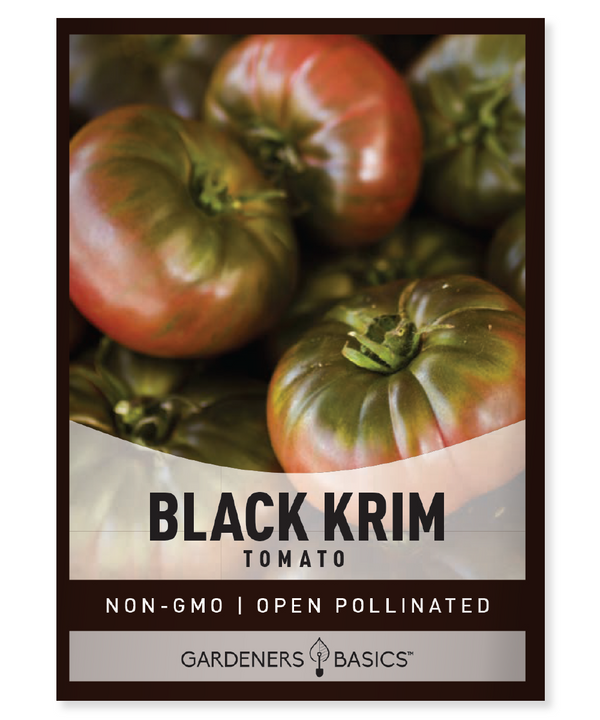
$2.49
Black Krim Tomato Seeds - Heirloom, Non-GMO, Non-Hybrid, Open-Pollinated Discover the rich, robust flavor of Black Krim Tomato Seeds, a classic heirloom variety renowned for its deep, mahogany-colored fruits with striking green shoulders. Perfect for garden enthusiasts and chefs alike,… read more
Remember that saving seeds from hybrid varieties may not produce plants with the same characteristics as the parent plant. It's best to save seeds from heirloom or open-pollinated varieties to ensure true-to-type plants in future generations.
Generally, growing beefsteak tomatoes requires careful planning, starting with selecting a suitable variety and providing optimal growing conditions. Ensure proper soil, fertilization, and watering practices, as well as good air circulation and pruning, to keep your plants healthy and productive. Stay vigilant against pests and diseases, and harvest your tomatoes at the right time for the best flavor and texture. You can enjoy a rewarding and fruitful beefsteak tomato harvest with dedication and patience.
Following this comprehensive, step-by-step guide, you can cultivate delicious, homegrown beefsteak tomatoes in your garden. Gardeners Basics staff are here to support you throughout your gardening journey, providing expert advice and high-quality seeds for a successful harvest. Visit gardenersbasics.com to explore our range of beefsteak tomato seeds and other gardening essentials to help you create a thriving home garden. Now that you know how to grow beefsteak tomatoes, we hope you'll try it in your garden this year.



